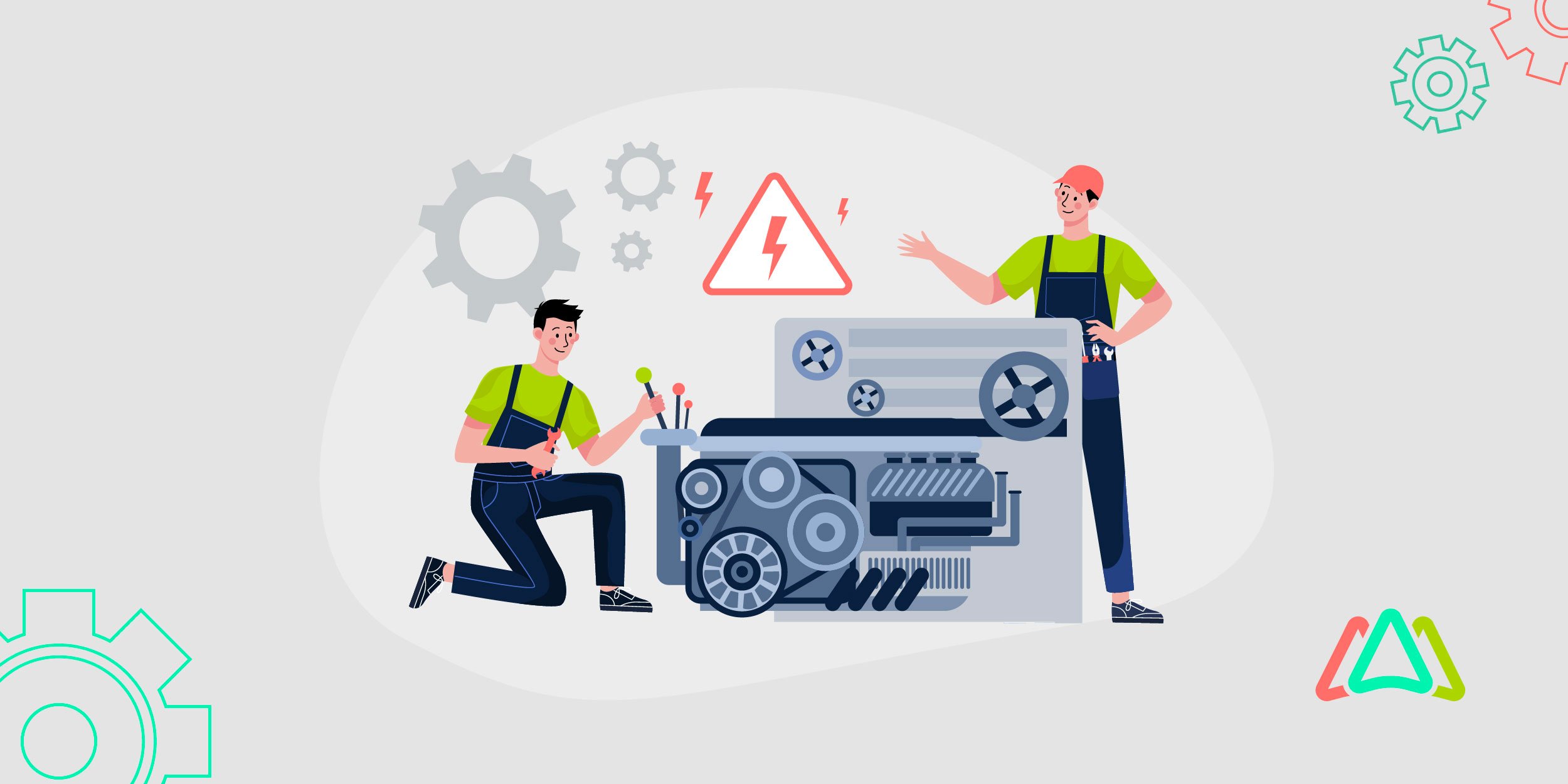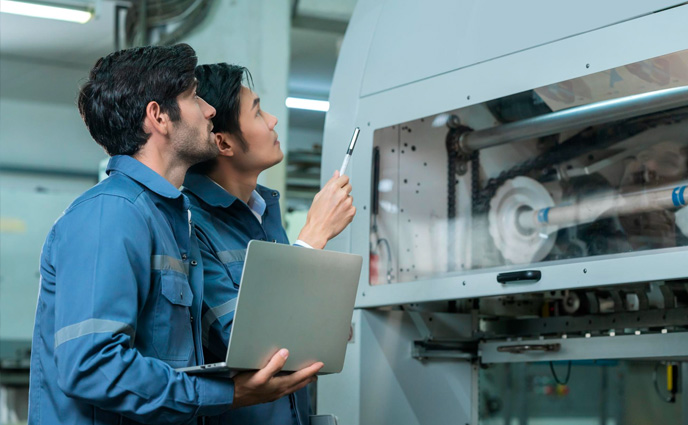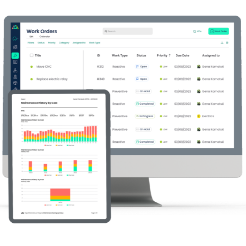
Essentials to Maintenance Troubleshooting
Understanding equipment functionality is crucial for effective repairs. A clear, systematic troubleshooting approach distinguishes between minor issues and significant complications. Robust troubleshooting plans prevent unexpected failures, enhance safety, and reduce repair costs by enabling prompt and accurate problem identification and resolution.
Undocumented and haphazard maintenance troubleshooting leads to extended downtime and budget issues, costing time and money. Guesswork in diagnosing root causes often results in failed repairs, decreased asset performance, and low team morale.
To move beyond simply replacing parts, a structured approach is essential. This article proposes a five-stage framework: anomaly detection, symptom definition, cause isolation, corrective action implementation, and outcome verification.
This article presents a structured troubleshooting framework with five crucial stages: detecting anomalies, defining symptoms, isolating causes, applying corrective actions, and verifying outcomes. By following this framework, maintenance teams can shift from reactive firefighting to proactive, precision diagnostics, reducing downtime, controlling maintenance spend, and driving continuous improvement.

What Is Maintenance Troubleshooting?
Maintenance troubleshooting is an organized process for identifying and resolving equipment faults by detecting symptoms, defining problems, isolating causes, applying corrective actions, and verifying results. Unlike routine maintenance, which follows scheduled tasks, and root cause analysis, which investigates systemic weaknesses after a failure, troubleshooting focuses on diagnosing and resolving immediate issues quickly and accurately.
Why Effective Troubleshooting Matters
Cost of Misdiagnosis
Speculative part swaps and repeat failures quickly exhaust maintenance budgets. For example, replacing an intact bearing still incurs labor, travel, and administrative costs; when the underlying fault remains unaddressed, teams perform the same repair again, effectively doubling or tripling spend. Over time, these parts can cause inventory levels to fluctuate and tie up skilled technicians.
Safety and Compliance Implications
Faulty diagnostic procedures often leave underlying issues to linger quietly, only to suddenly morph into catastrophic failures down the line. Regulatory audits triggered by inspection records revealing unresolved matters can result in hefty fines or sudden forced shutdowns of operations.
Cost of Downtime
Every hour of unscheduled downtime costs money in lost output and overtime, and has ripple effects across production schedules. Investing in structured troubleshooting tools and training delivers measurable returns, improves overall equipment effectiveness, and strengthens your bottom line.
The Troubleshooting Mindset
Effective maintenance troubleshooting begins with the right mindset. Rather than reacting to each failure in isolation, successful teams use mental models to guide every diagnostic step. Below are three essential troubleshooting mindsets to adopt:
1. System Thinking
Treat each asset as part of a larger system of subsystems and controls rather than an isolated machine with many dependencies. Mapping interactions between pumps, valves, sensors, and control logic enables the prediction of fault cascades through the network from one faulty component. This viewpoint helps prioritize checks and sidesteps futile symptom chasing by focusing on likely issues effectively.
2. Logical Thinking
Logical thinking is crucial in maintenance troubleshooting because it provides a systematic approach to identifying and resolving issues, leading to faster and more efficient problem-solving. This disciplined process helps technicians eliminate unlikely causes, analyze symptoms methodically, and verify solutions accurately, ultimately minimizing downtime and preventing further damage.
3. Documentation Discipline
Accurate, time-stamped logs of symptoms, readings, and corrective actions are indispensable. Detailed records enable you to compare current failures with historical trends, identify recurring patterns, and refine troubleshooting checklists. Over time, this builds a searchable knowledge base so each fix becomes faster and more reliable.
Core Troubleshooting Framework: The 5-Step Loop

1. Detect
Recognize anomalies early, listen to operators, review alarm logs, and monitor sensors for unusual vibrations, temperatures, or error codes. Gather initial context from maintenance histories and diagrams, then confirm which asset or subsystem requires further attention.
2. Define
Capture the symptom in exact detail, noting its location on the asset, the severity of the fault, the timing and frequency of occurrence, and any error codes or alarm messages. Take photos or videos, record temperature and pressure readings, and gather operator observations (including load conditions and recent changes). A clear, consistent symptom definition narrows the scope for investigation and ensures the right parts and tools are staged.
3. Isolate
Use schematics and checklists to eliminate subsystems one by one. To determine if the fault persists, perform simple tests, swap components individually, run at reduced load, or bypass the circuits. This focused elimination identifies the single failing element, avoids unnecessary parts changes, and sets the stage for a targeted repair.
4. Repair
Apply the validated solution during a planned maintenance window. Install the correct spare parts, adhering to the manufacturer's torque and alignment specifications. Follow all safety procedures, including lock-out/tag-out protocols. Communicate clearly with operations to coordinate timing and minimize production impact.
5. Verify & Document
Run the equipment under normal and peak conditions to ensure the fault is resolved. Log the entire process, including symptoms, tests, repairs, and results, in your CMMS, attaching relevant photos, sensor data, and operator notes. This creates a searchable record that speeds up future troubleshooting and drives continuous improvement.
Simple Diagnostic Techniques
Here are quick, actionable troubleshooting tips to help maintenance teams spot and resolve common equipment issues.
Visual, Audio, and Smell Inspections
Inspect the equipment for leaks, corrosion, or signs of wear. Listen for unusual clicks, rattles, or hisses. Note odours like burning insulation or hydraulic fluid. These simple checks often reveal the most obvious faults before you deploy more advanced tools.
Infrared Thermography for Hot-Spot Detection
Use a handheld thermal imager to scan electrical panels, motors, and bearings for abnormal heat patterns. Hot spots can indicate loose connections, overloaded circuits, or failing bearings. Regular IR surveys catch these problems early, preventing unexpected shutdowns and expensive repairs.
Vibration and Ultrasonic Analysis for Rotating and Pneumatic Systems
Attach vibration sensors to shafts, pulleys, and gearboxes to monitor frequency spectra and overall vibration levels. Elevated readings point to misalignment, imbalance, or bearing defects. For air or steam systems, ultrasonic detectors detect leaks and partial discharges by converting high-frequency sounds into audible signals, enabling crews to seal leaks before they escalate.
Oil Sampling and Laboratory Wear-Metal Trends
Collect oil samples from gearboxes, hydraulic reservoirs, and compressors on a regular schedule. Send them to a lab for spectrographic analysis of wear metals, contaminants, and viscosity. Trending these results flags abnormal wear rates or contamination events, enabling proactive maintenance on bearings, gears, and hydraulic components.
Photo-Based Diagnosis and End-User Self-Service Guides
Require operators to attach clear images of the fault area when submitting a work order. Photos help technicians arrive prepared with the correct parts and tools. Complement this with simple self-service checklists or video guides for common minor issues, empowering users to resolve trivial faults quickly and freeing skilled technicians for more complex diagnostics.
Digital Tools & Accelerators
Diagnostic Toolbox
Combine traditional instruments, such as digital multimeters, infrared cameras, and vibration analyzers, with a rapid peer review of maintenance logs and past incidents. This blended approach transforms raw data into clear insights, enabling you to pinpoint faults more quickly and confidently.
CMMS / EAM Integrations
Sensor alerts and failure codes are directly integrated into CMMS software or EAM platforms, automating the creation of work orders and assigning various tasks. Technicians receive super-precise notifications alongside asset histories and standard repair procedures, thus effectively reducing the need for manual data entry. Mobile CMMS makes asset records, manuals, and parts lists accessible in the field, allowing users to access this data instantly, anytime.
IIoT Dashboards
Industrial Internet of Things dashboards aggregate real-time data from vibration sensors, temperature probes, and control systems into a unified view. Live anomaly monitoring flags deviations the moment they occur, while remote diagnostics enable experts to assess issues off-site and advise on next steps, cutting unnecessary site visits.
Augmented Reality
Augmented reality overlays project repair instructions and 3D schematics onto equipment, guiding step-by-step procedures; integrated video calls connect users with remote specialists for on-demand expert support.
AI-Powered Predictive Models
Machine learning algorithms analyze historical and streaming sensor data to predict the most likely fault sources before failures materialize. By ranking potential issues, these models help prioritize inspections, optimize spare parts stocking, and schedule preventive actions that avert unplanned downtime.
Culture, Communication & Collaboration
Effective troubleshooting relies on more than just diagnostics and technology; it thrives on the right culture and teamwork. Here are practical practices that build a resilient troubleshooting culture and keep improvements rolling:
Embedded Safety Routines
Embed safety into daily routines by starting stand-ups with hazard checks, integrating hazard spotting into role-rotation drills, and including PPE, lock-out/tag-out status, and safety observations in reporting templates.
Daily Stand-Ups to Share New Failure Modes
Hold brief morning huddles where technicians and operators report fresh symptoms, near-misses, and quick fixes. These stand-ups surface emerging patterns, align the team on priorities, and accelerate the spread of critical insights before minor issues grow.
Cross-Skill Training & Role-Rotation Exercises
Rotate team members through different roles and asset types so everyone gains hands-on exposure to varied equipment and failure scenarios. “Swap-the-seat” drills foster empathy, broaden skill sets, and build collective troubleshooting confidence.
Clear Communication Protocols & User Involvement
Establish standardized symptom-report templates that include fields for location, timing, severity, error codes, and photos. Involve end-users in the initial data gathering; their observations often pinpoint the root cause more quickly and reduce misinterpretation.
Kaizen Boards & Continuous Learning Loops
Utilize visual Kaizen boards in a shared workspace to track recurring issues, identify root causes, and document corrective actions. Review board updates regularly to identify trends, prioritize improvement projects, and close the feedback loop, turning every troubleshooting event into a learning opportunity.
KPIs & Continuous Improvement Metrics
Implementing structured troubleshooting requires measurement. Track these core metrics:
|
KPI |
Definition |
|
MTTD |
Mean Time to Detect. Time from fault detection to root cause identification, lower values mean faster diagnostics |
|
First-Time Fix Rate |
The percentage of repairs resolved on the first visit is a high rate, which reflects an accurate diagnosis |
|
Repeat Fault Rate |
Percentage of failures that recur within a defined window, on the same equipment. |
|
Cost-per-Incident vs Downtime Saved |
Compares average repair cost to production loss averted, quantifies financial ROI of fixes |
|
Mean Time to Repair. Average repair duration assesses how efficiently resources are deployed |
|
|
MTBF |
Mean Time Between Failures. Average uptime between breakdowns measures overall asset reliability |
|
Work Order Backlog |
Total hours of open work orders, showing where work is piling up. |
|
OEE |
Overall Equipment Effectiveness. A composite of availability, performance, and quality captures the actual production impact of downtime |
|
Technician Utilization Rate |
The ratio of productive maintenance hours to total available hours optimizes workforce deployment. |
Conclusion
A structured troubleshooting framework delivers high-impact wins, including faster diagnosis, lower parts costs, and safer operations. Teams eliminate speculative fixes and repeat failures by detecting anomalies early, defining precise symptoms, isolating the root causes, applying the correct repairs, and verifying the outcomes. These gains translate into real savings, stronger compliance, and confidence in maintenance outcomes. Now is the time to audit your current processes against the five-step loop. Identify gaps in detection protocols, symptom documentation, elimination testing, and post-repair verification; use these insights to refine your approach and embed continuous improvement across your team.
TABLE OF CONTENTS
Keep Reading
The longest U.S. federal government shutdown to date lasted 43 days, beginning on October 1, ...
5 Dec 2025
Every maintenance professional faces it sooner or later — that critical time when an aging ...
18 Nov 2025
The term 'best' is often used loosely, without a clear understanding of its context or ...
14 Nov 2025
In the not too distant past, maintenance strategies have been defined by reaction—fixing ...
13 Nov 2025
Tax season is the time of year that often sends a ripple of anxiety through many of us. The ...
11 Nov 2025
Selecting a Computerized Maintenance Management System (CMMS) can, at first glance, be an ...
4 Nov 2025
In healthcare facilities, equipment uptime involves more than achieving operational ...
31 Oct 2025
Companies are subject to economic ups and downs, also known as economic volatility. Today, ...
30 Oct 2025
Maintenance challenges are a constant struggle, with unplanned downtime costing manufacturers ...
27 Oct 2025
Last winter, a maintenance technician at a U.S. paper mill ignored a predictive alert that ...
10 Oct 2025
Many organizations proudly say they “have a CMMS,” but ownership alone doesn’t equal ...
9 Oct 2025
Every maintenance team is under pressure to do more with less. Unplanned downtime is often ...
7 Oct 2025
The implementation of simple, yet powerfully effective, checklists has repeatedly ...
3 Oct 2025
In manufacturing, every second counts. When production stops, whether due to scheduled ...
2 Oct 2025
The increasing cost of maintenance, lack of accountability, and siloed systems leave many ...
30 Sep 2025
Preventive maintenance is one of those things maintenance teams know they need to do, but it ...
26 Sep 2025
Public services are essential to daily life. The provision of safe roads, functional transit, ...
25 Sep 2025
For most manufacturing facilities, a major focus of their maintenance teams revolves around ...
24 Sep 2025
Have you ever tried explaining to the CEO why the production line has been down for hours ...
18 Sep 2025
Over the past few decades, the hotel industry has undergone a dramatic transformation. ...
16 Sep 2025





